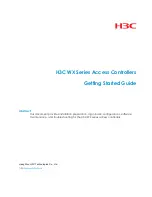
memory location, in the range 0x0000.0400 to 0x3FFF.FC00 (see “Vector Table” on page 119). Note
that when configuring the
VTABLE
register, the offset must be aligned on a 1024-byte boundary.
2.5.5
Exception Priorities
As Table 2-8 on page 115 shows, all exceptions have an associated priority, with a lower priority
value indicating a higher priority and configurable priorities for all exceptions except Reset, Hard
fault, and NMI. If software does not configure any priorities, then all exceptions with a configurable
priority have a priority of 0. For information about configuring exception priorities, see page 177 and
page 159.
Note:
Configurable priority values for the Tiva™ C Series implementation are in the range 0-7.
This means that the Reset, Hard fault, and NMI exceptions, with fixed negative priority
values, always have higher priority than any other exception.
For example, assigning a higher priority value to IRQ[0] and a lower priority value to IRQ[1] means
that IRQ[1] has higher priority than IRQ[0]. If both IRQ[1] and IRQ[0] are asserted, IRQ[1] is processed
before IRQ[0].
If multiple pending exceptions have the same priority, the pending exception with the lowest exception
number takes precedence. For example, if both IRQ[0] and IRQ[1] are pending and have the same
priority, then IRQ[0] is processed before IRQ[1].
When the processor is executing an exception handler, the exception handler is preempted if a
higher priority exception occurs. If an exception occurs with the same priority as the exception being
handled, the handler is not preempted, irrespective of the exception number. However, the status
of the new interrupt changes to pending.
2.5.6
Interrupt Priority Grouping
To increase priority control in systems with interrupts, the NVIC supports priority grouping. This
grouping divides each interrupt priority register entry into two fields:
■ An upper field that defines the group priority
■ A lower field that defines a subpriority within the group
Only the group priority determines preemption of interrupt exceptions. When the processor is
executing an interrupt exception handler, another interrupt with the same group priority as the
interrupt being handled does not preempt the handler.
If multiple pending interrupts have the same group priority, the subpriority field determines the order
in which they are processed. If multiple pending interrupts have the same group priority and
subpriority, the interrupt with the lowest IRQ number is processed first.
For information about splitting the interrupt priority fields into group priority and subpriority, see
page 171.
2.5.7
Exception Entry and Return
Descriptions of exception handling use the following terms:
■
Preemption.
When the processor is executing an exception handler, an exception can preempt
the exception handler if its priority is higher than the priority of the exception being handled. See
“Interrupt Priority Grouping” on page 120 for more information about preemption by an interrupt.
When one exception preempts another, the exceptions are called nested exceptions. See
“Exception Entry” on page 121 more information.
June 18, 2014
120
Texas Instruments-Production Data
The Cortex-M4F Processor
















































